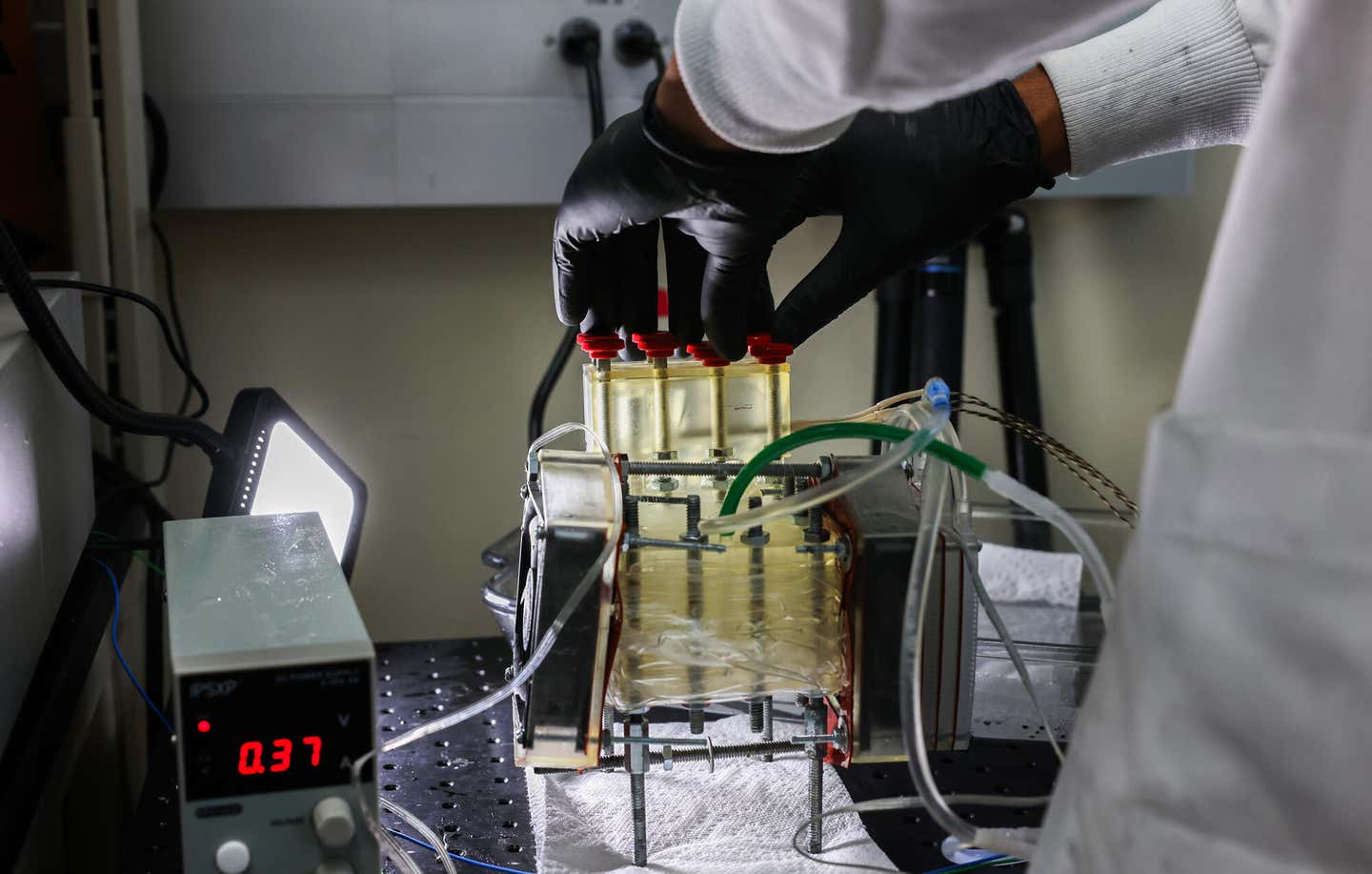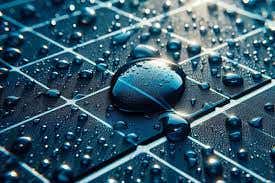Breakthrough new technology turns dry desert air into drinkable water
Breakthrough tech pulls water from dry desert air—even at 10% humidity. A real solution for water scarcity is here.

A new technology can pull gallons of water from dry desert air using solar power and nature-inspired materials—even at 10% humidity. (CREDIT: Jeff Scheid/UNLV)
Turning dry desert air into drinkable water once sounded like something from a sci-fi movie. Now, it’s becoming reality—thanks to a breakthrough from researchers at the University of Nevada, Las Vegas. As water supplies shrink across the region due to drought and climate change, scientists have taken a huge step toward creating a sustainable water source from an unlikely place: the air.
This new method doesn’t just work when the air is damp. It works even when it’s very dry. And it’s been tested outside in one of the driest cities in the U.S. Researchers are showing that with the right materials, even 10% humidity can be enough to produce clean water.
A New Way to Harvest Water from Air
Mechanical engineering professor H. Jeremy Cho leads the research team behind the new method. Their approach takes a big leap past older water harvesting systems, which don’t perform well in dry climates.
Cho and his team developed a new way to pull water vapor out of the air using a special “skin” made from a hydrogel membrane. Inspired by nature, this skin works like the surfaces found on certain frogs and plants that pull water from the air to stay hydrated.
“We took that biological idea and tried to do it in our own way,” said Cho. “There are so many cool things happening in nature – you just have to look around, learn, and be inspired.”
The team published their findings on October 22 in the journal Proceedings of the National Academy of Sciences. It marks a significant advancement in what’s called atmospheric water harvesting, which is the process of turning water vapor in the air into usable water.
Most current methods don’t work well when humidity levels fall below 30%. That’s a major problem in dry places, where low humidity is common. But this new approach continues to pull water from the air even when humidity drops to 10%, a level that would shut down most other systems.
Related Stories
How the System Works
The system captures water directly into a liquid salt solution, allowing for faster collection than previous methods. This liquid can then be processed into safe drinking water or used to generate energy. Since it uses a hydrogel-based membrane, water moves quickly from the air into the solution, mimicking how nature stores and moves water.
One of the most exciting parts of the research is that the process works with sunlight. Because it relies on solar power, it could be especially helpful in places like the Las Vegas Valley, where the sun shines about 300 days a year. This means it doesn’t require electricity from the grid, lowering costs and making it more accessible in remote or off-grid areas.
“This paper really establishes that you can capture water at a very fast rate,” said Cho. “We can start to forecast how big of a system we would need to produce a set amount of water.”
The numbers are promising. A setup with just one square meter of collection surface—roughly three feet by three feet—can pull in about a gallon of water per day in a city like Las Vegas. In more humid areas, the yield could be two or even three times greater.
From Research Lab to Real-World Solutions
Cho didn’t stop at the lab. He co-founded a startup called WAVR Technologies, Inc. to bring this water-harvesting technology to the public. The company is working on both personal and commercial-sized devices that can pull water straight from the air.
WAVR is the first university spinoff from the National Science Foundation’s Regional Innovation Engines program. The program backs projects that address climate and sustainability problems with cutting-edge solutions. This puts WAVR in a strong position to lead the way in solving real-world water shortages.
The fact that this tech is being built in one of the country’s driest regions makes its success even more meaningful. With climate change making water less predictable, having tools that create water from thin air could be life-changing, especially in areas facing serious drought.
Why This Matters Now
In the Southwest and other arid regions around the globe, water is becoming harder to find. Droughts last longer. Lakes and rivers are shrinking. Cities and farms are competing for what’s left. People are being asked to conserve more water than ever before.
“Our water resources are depleting and our planet’s climate is changing,” Cho said. “To reach sustainability, we have to change our habits. This whole idea seemed like science fiction, but this is possible, and we’re actually doing it.”
This new water-harvesting method could help cut dependence on traditional water supplies. It could allow people to stay in places where water scarcity is growing worse. And it might help meet the needs of farming, emergency response, and everyday use in dry zones around the world.
Most importantly, the system opens a door to creating water in places where it’s desperately needed. No digging. No pipes. No big infrastructure. Just sun, air, and smart science.
A Future with Water From Air
With more testing and scaling, these systems could be used in homes, on farms, or by entire communities. Since they can be powered by the sun, they’re useful in remote locations or areas with unstable power. They also work without relying on existing water infrastructure, making them a good fit for emergency relief efforts.
As the technology improves and costs drop, more people may gain access to clean water in places that once seemed too dry to support life. That kind of transformation could reshape how we think about water security in a warming world.
By learning from nature and mixing science with creativity, Cho and his team are showing what’s possible. The air around you might just be the water of tomorrow.
Note: The article above provided above by The Brighter Side of News.
Like these kind of feel good stories? Get The Brighter Side of News' newsletter.
Mac Oliveau
Science & Technology Writer | AI and Robotics Reporter
Mac Oliveau is a Los Angeles–based science and technology journalist for The Brighter Side of News, an online publication focused on uplifting, transformative stories from around the globe. Passionate about spotlighting groundbreaking discoveries and innovations, Mac covers a broad spectrum of topics—from medical breakthroughs and artificial intelligence to green tech and archeology. With a talent for making complex science clear and compelling, they connect readers to the advancements shaping a brighter, more hopeful future.



